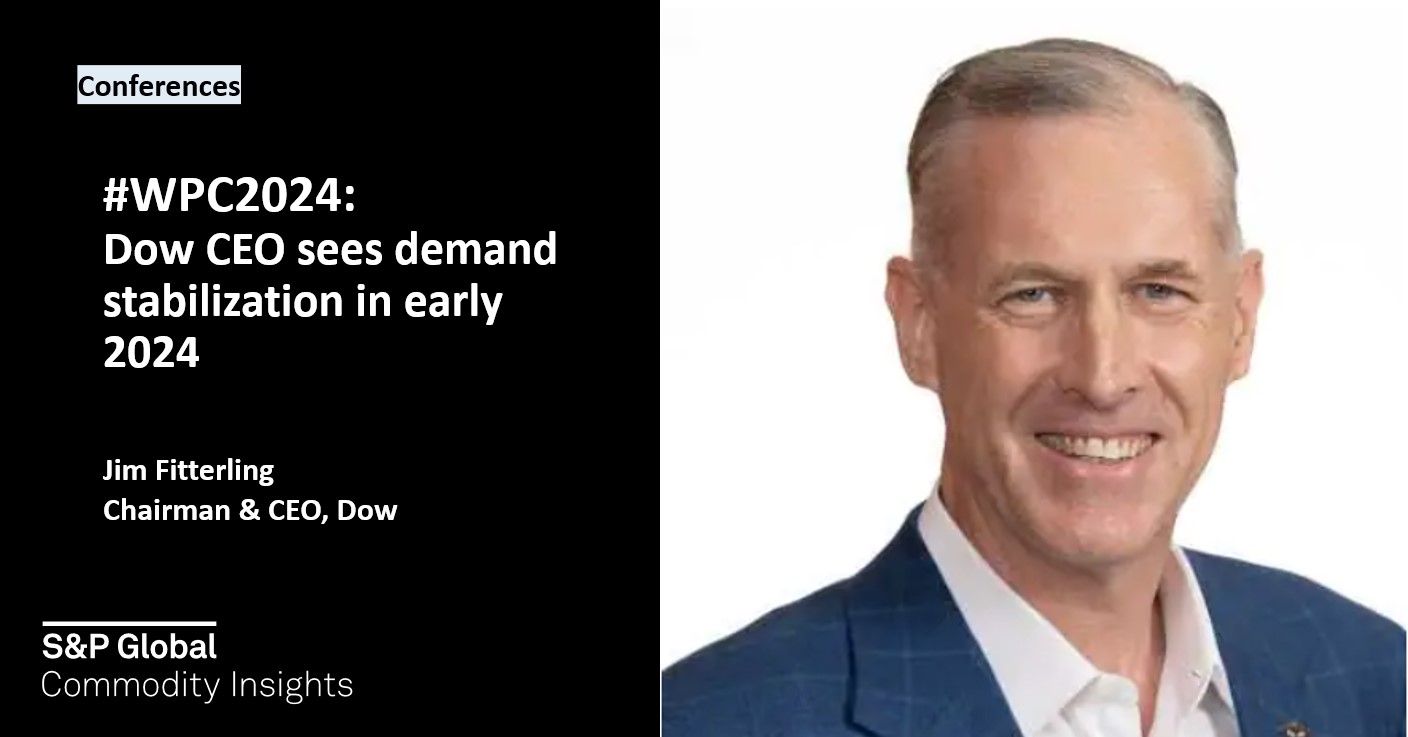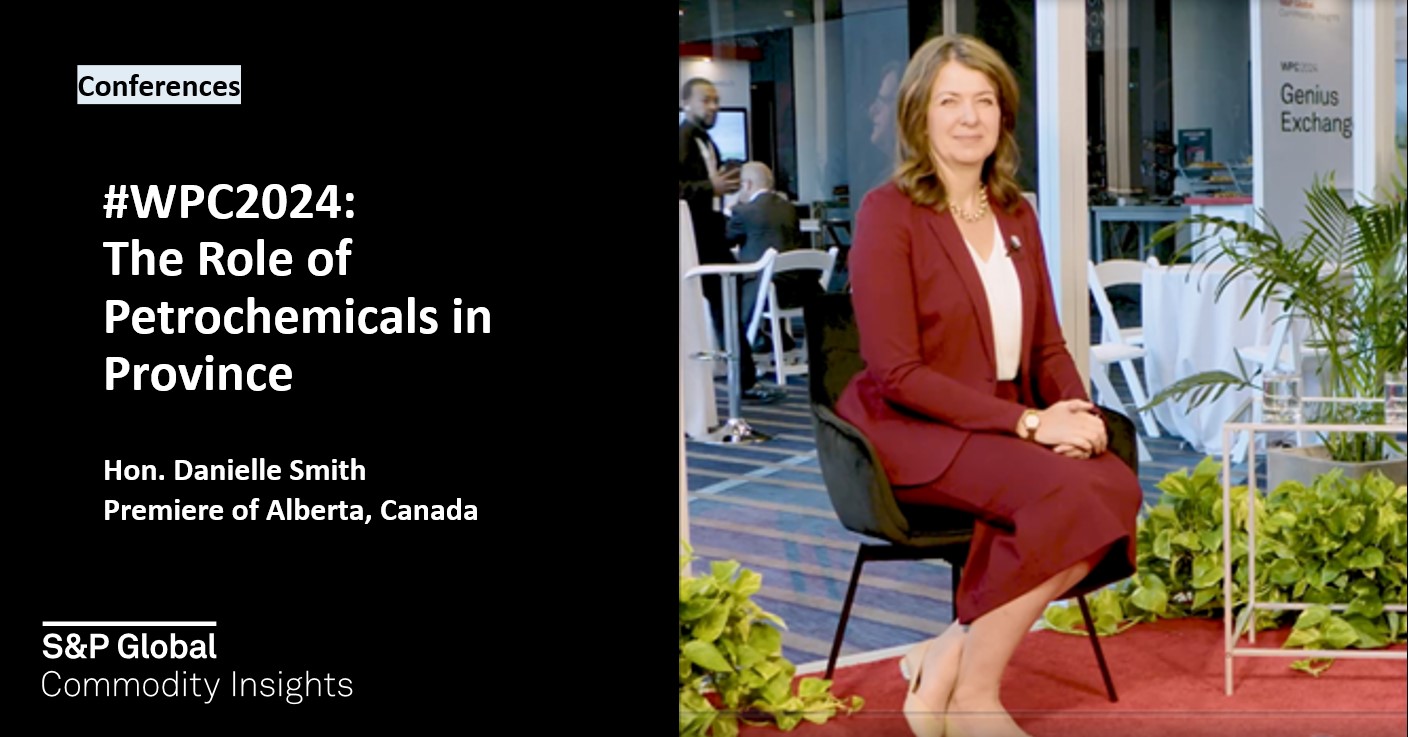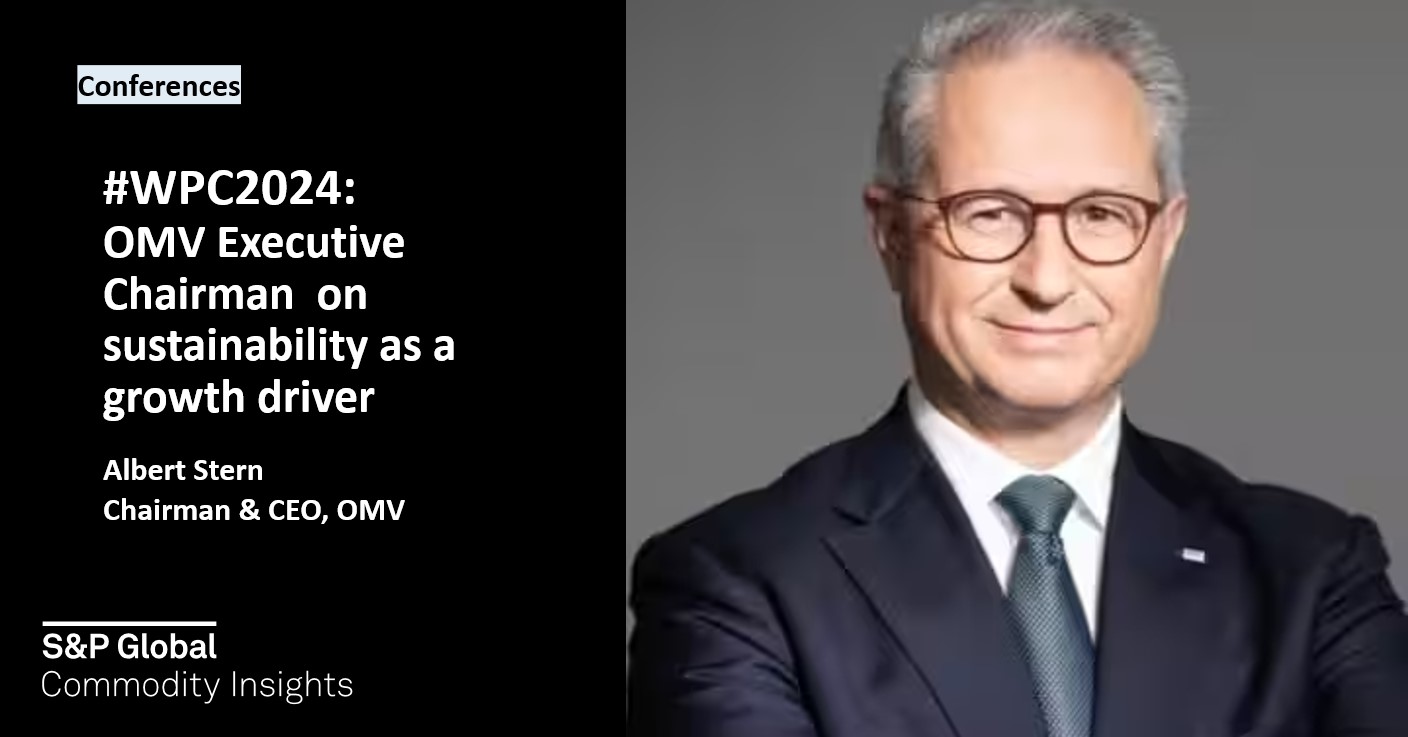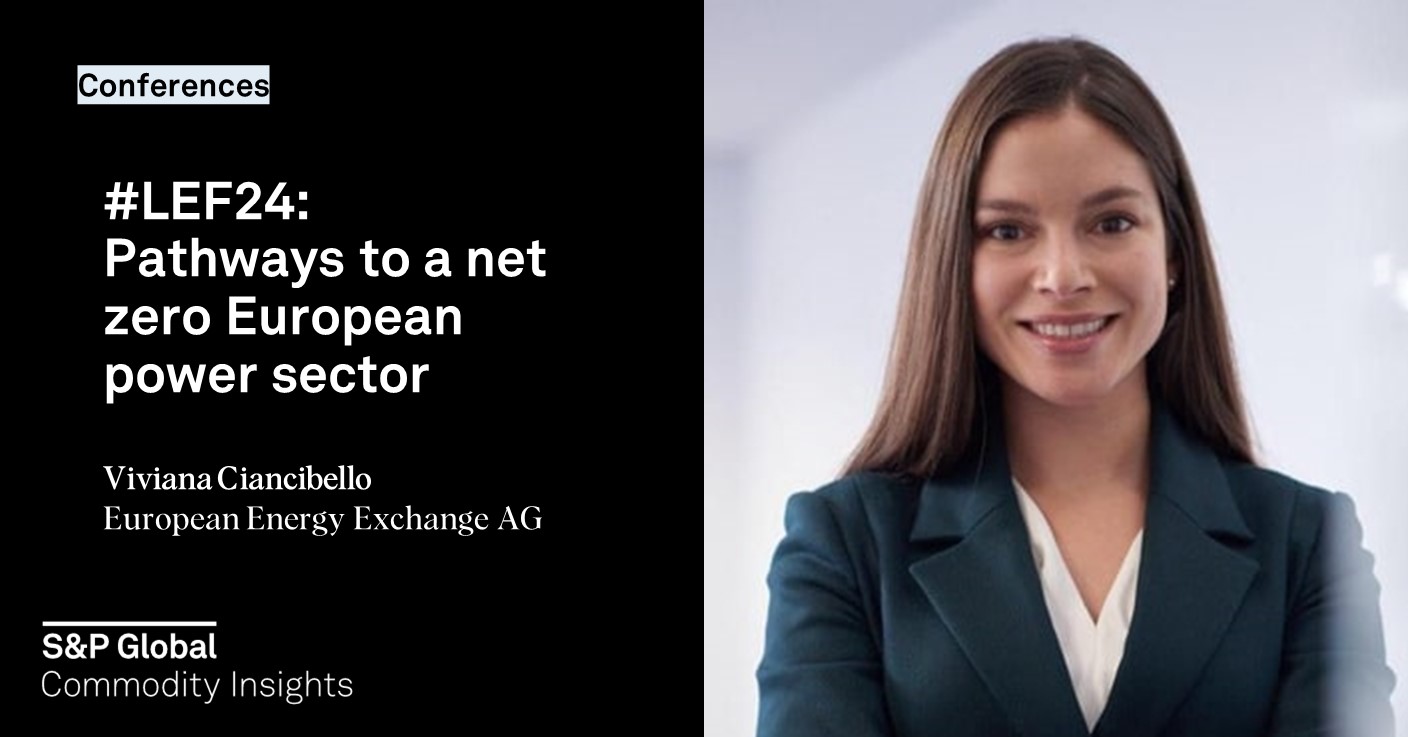/ CONFERENCES
MPGC
May 20-22 2024 | Dubai, United Arab Emirates
/ CONFERENCES
/ CONFERENCES
May 20-22 2024 | Dubai, United Arab Emirates
/ CONFERENCES

The S&P Global Commodity Insights sugar conference took place in Geneva during April 17-18. The discussions covered the most relevant topics in the sugar market, especially focused on Europe. Experts in the field covered key themes from production, sustainability, diversification, trade to prices.The first day was focused on production and one of the questions addressed was whether participants would see stability in the EU sugar market. There was consensus among participants that EU+UK will increase sugar beet area in 2024, however, the challenges are already in the horizon with unfavorable weather leading to late sowing and the higher probability of pests’ attacks. French sowing was said to be 2.5 weeks delayed compared to average, a situation not seen in many years, while aphids could already be spotted in the fields. In the UK, sowing is also delayed but on a positive note, around 60% of the crop is using neonics treated seeds, which would offer protection to yellow virus losses. Then, representatives of farmers’ associations put light on the challenges they have been facing over tighter regulations, with a limited toolbox to tackle the cuts on plant protection uses, green deal, among others. Growing sugar beet continues to be risky and if weather plays ad hoc, the sugar yields in 2024-25 could face a significant drop and it remains to be seen if a recovery in planted area would result in a significant recovery in sugar output.The future of sugar beet was also covered by seeds manufactures, producers and companies offering diversification on the sector. The key message was that there is still limited innovation available to compensate for cuts in chemicals use and more needs to be done from all stakeholders to achieve sustainability goals. Additionally, investments will be necessary and will need to be shared within all the value chain. Risks and rewards also need to be shared with farmers and sustainability needs to encompass all the aspects.On the consumption discussions, while it remains hard to estimate it precisely, market participants agreed that EU+UK has been facing a negative trend or at best stable. However, population growth in other parts of the world and developing economics are responsible for the global consumption increase. In the world markets, high white premiums could also be an indication that demand is there, with import margins open for many destinations.Delving into trade, the spotlight was on past and new trade agreements and how they need to continue evolving along with changes in the sugar market. Substantial quantities of Ukrainian sugar entering the bloc was, of course, one of the main themes. Improving solidarity links with Ukraine while still protecting EU domestic market was a balance to be achieved. At the moment, despite logistical difficulties, Ukrainian traders found solutions to export to different destinations and with higher production expected for 2024-25, these new routes will be essential to move the surplus -- that could reach up to 900,000 mt -- to the world market.In regard to the global market and prices, La Nina effects over main exporting countries like Brazil, India and Thailand could change expectations. Nevertheless, for the short term, markets are more likely to move sideways on a surplus expectation. EU domestic prices are also unlikely to move much from current levels amid the forecast of higher production on top of the current circumstances of comfortable stocks. Still, the weather ahead plus pests infestation remain a risk and cuts in production estimates could drive prices up. It was the consensus that especially in Europe, price volatility can be significant as the domestic market easily goes to deficit from balanced over the seasons.

After decades of slow load growth, surging power demand from electrification of the US economy in a context of increased technical and environmental pressures poses multiple challenges for power markets and utilities, executives said April 16.Some of the executives, speaking at the S&P Global Commodity Insights Global Power Markets event in Las Vegas, suggested ways of meeting those challenges include improved and expanded generation and transmission technology.From about 1990 to about 2007, load growth in the Lower 48 states averaged about 2% a year, said Douglas Giuffre, senior director for North American power markets analysis at S&P Global Commodity Insights, but in the wake of the Great Recession, load growth slowed to about 0.2% a year, as energy efficiency efforts bore fruit.Combining utility projections with consultants employed by regional transmission organizations, "they had consistent load forecasts that over-projected," Giuffre said.The North American Electric Reliability Corporation noticed this and revised its projected load growth percentages downward to about 0.5% in 2022, but more than doubled that projection in 2023 to about 1.2%, partly because of surging demand from data centers, Giuffre said."For many parts of the country, this is a dramatic shift from where load growth had been to know what's expected to come," Giuffre said. "And this is going to require a lot of utilities and RTOs to kind of wrestle with this question: How do you manage to meet this potentially rapidly growing demand that we just haven't seen? … What has changed, clearly, is the sudden discussion of data centers."Data centers currently consume about 185 TWh a year, "the equivalent to all the residential electricity consumption in Florida and New York today." Across the various RTOs, data center load is projected to add about 250 TWh, "the equivalent of adding Texas and California residential load," Giuffre said.'An uptick in gas' Such surging demand cannot reliably be served, at least in the short term, without adding natural gas-fired generation, Giuffre said."Natural gas had been obviously for quite some time a leading resource in the market, but we're likely to be at a 25-year low in terms of new gas additions this year," Giuffre said. However, S&P Global researched the integrated resource plans of several utilities, and "what we’re seeing is an uptick in gas either to replace existing coal-fired generation or as peaking capacity to support renewables."Vincent Sorgi, president and CEO of PPL, the Allentown, Pennsylvania-based utility holding company, said, "The key to the clean energy transition and getting renewables deployed at scale is natural gas.""Batteries right now are significantly more expensive than building new natural gas, and the new natural gas units are incredibly efficient," Sorgi said during a "fireside chat" with Xizhou Zhou, vice president of the Gas, Power and Climate Solutions group at S&P Global."I think, in general, politicians understand the value of natural gas so they seem to be a lot more amenable" to allowing its growth, Sorgi said, particularly if it is combined with carbon capture and sequestration or alternative fuels such as renewable natural gas or hydrogen."So, I think you’ll continue to see that in integrated utilities … for more fossil generation," Sorgi said.Cindy Crane, CEO of PacifiCorp, the Portland, Oregon-based utility holding company, said her company has proposed gas-fired generation to some utility regulators "under the condition that they’re capable to convert to hydrogen.""We are saying that those are needed to bring that reliability for a longer term in our system," Crane said.PacifiCorp is also pursuing nuclear power development in the form of a 385-MW small modular reactor pilot project with Bill Gates’ TerraPower, with groundbreaking schedule for June 10 in Caspar, Wyoming, Crane said.Transmission expansion PacifiCorp has also embarked on a 20-year transmission expansion plan involving 345 kV and 500 kV lines estimated to cost about $12 billion, with to of the larger segments resulting in a high-voltage network of more than 1,100 miles of line."Then, we have several hundred miles more that are scheduled to be coming online between 2025 and 2028," Crane said.Doug Cannon, president and CEO of NV Energy, which serves significant load centers in Las Vegas, Reno and Carson City, said his company is building more than high-voltage lines along the state’s western border to Reno, east across the middle of the state to Ely and then south to link up with NV Energy’s existing grid."What you're going to see if you picture Nevada, there's going to be a giant 500-kV triangle that goes around the entire state that is going to improve reliability for our customers [and] dispatch our system in a more efficient way, dropping energy costs for customers," Cannon said. "It's also going to open up a lot of area that previously could not be developed for renewable energy. There's tremendous solar potential along the west side of the state of Nevada, where there was no transmission. In addition, in the center part of the state, there's more solar potential, as well as improve the geothermal potential."

Chemical demand is stabilizing in early 2024, Dow Inc. chairman and CEO Jim Fitterling said at the World Petrochemical Conference by SP Global in Houston. Construction of Dow’s net-zero Alberta cracker will begin soon, and the company hopes to pursue similar net-zero ethylene investment in the US. WPC took place from March 18-22 and LIVE is your all-access pass to the conference. Check back for more chemical insights and cutting-edge coverage.

Alberta premier Danielle Smith highlights the critical role petrochemicals play in Alberta’s economy at the World Petrochemical Conference by SP Global in Houston. She highlighted the low-cost gas and feedstock advantage, available carbon capture infrastructure, and steps Alberta is taking to ensure hydrocarbons are upgraded to higher-value chemicals and derivatives in the province. WPC took place from March 18-22 and LIVE is your all-access pass to the conference. Check back for more chemical insights and cutting-edge coverage.

OMV chairman and CEO Albert Stern discusses early indications of a stronger demand environment for petrochemicals at the World Petrochemical Conference by SP Global in Houston. Stern also highlighted the opportunity that decarbonization and sustainability bring and how OMV is turning it into a growth driver. WPC took place from March 18-22 and LIVE is your all-access pass to the conference. Check back for more chemical insights and cutting-edge coverage.

SP Global Commodity Insights rang the closing bells at the London Stock Exchange, in partnership with the Energy Institute, kicking off the London Energy Forum.For more coverage of the London Energy Forum, visit Conferences in Commodity Insights LIVE

Europe’s leading power exchange EEX is witnessing a fresh surge in activity on its platform, Business Development Manager Viviana Ciancibello tells SP Global Commodity Insights. Maturing power markets are attracting high frequency and algorithmic trading, while location spread trading is on the rise as participants seek to benefit from regional differences in wind and solar output.Viviana joined the speaker panel at the London Energy Forum 2024. Fore more coverage of the event, go to Conferences in Commodity Insights LIVE

The director general of the World Nuclear Association, Dr. Sama Bilbao y Leon, discusses the global nuclear industry’s goal to triple its existing nuclear capacity by 2050, as well as the infrastructure issues impacting the global uranium mining and enrichment sectors.Dr. Bilbao y Leon was a speaker at the London Energy Forum 2024. Fore more coverage of the event, go to Conferences in Commodity Insights LIVE

The Panama Canal Authority raised their vessel transits per day to 24 due to unexpected rain in December, and plan to keep it that way until April, the end of the country’s dry season. Jose Arango, Senior Analyst with the Strategic Planning Division of the Panama Canal Authority spoke with SP Global Commodity Insights LIVE about what’s to come, noting that the authority hopes to return to an average 36 vessel transits per day in May depending on water levels.Mr. Arango was a speaker at the Caribbean Energy Conference held in Panama from January 28-31st.

Chris Davy, deputy assistant secretary with the US Department of State’s Office of Energy Transformation, discusses the challenges to investing in the energy transition in the Caribbean and the resources developers are looking at to drive the transition away from fossil fuels.
Established in 1985, the World Petrochemical Conference is the premier assembly of industry leaders, global experts, and government officials convening for thought-provoking dialogue and in-depth discussion around the major strategic issues facing all aspects of the petrochemical industry.